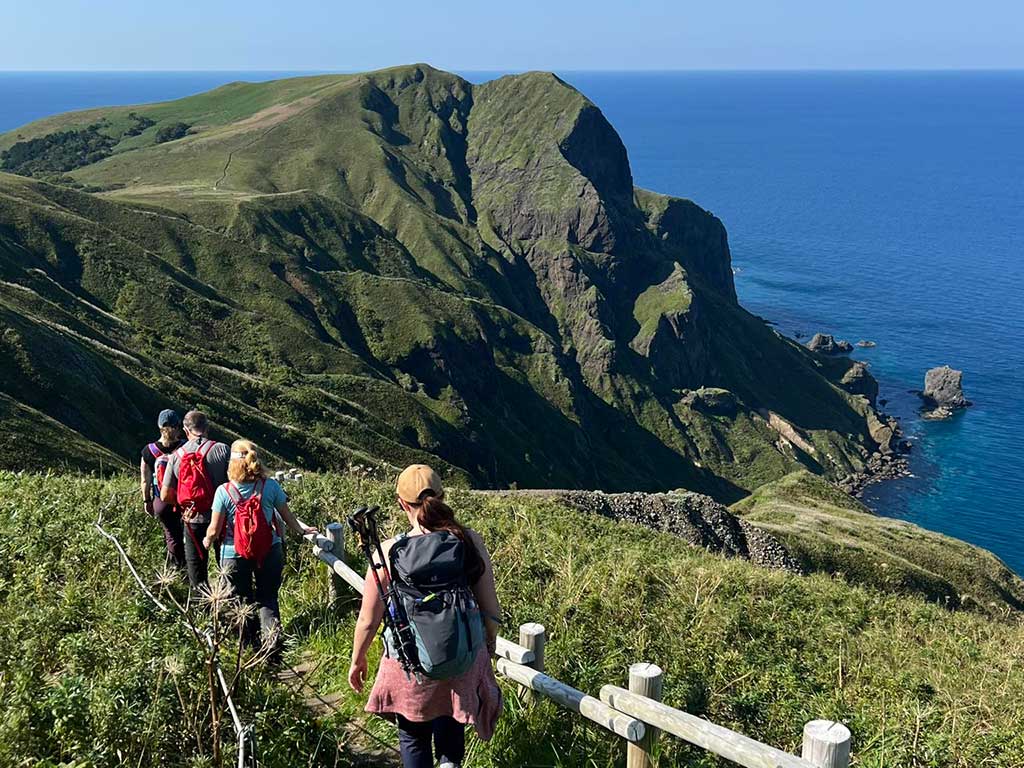
By Nancy Dorrans
Was I dreaming? That’s what it feels like now anyway. In early September I flew across the world to a destination about which I knew very little. The beauty and wildness of northern Hokkaido came flowing into view upon arrival to Wakkanai airport at the northernmost tip of Japan. From here you can see Russia on a clear day. And so began my Adventure Travel World Summit Pre-Summit Adventure (PSA), exploring the two small islands of Rebun and Rishiri.
After connecting with our guides Zac and Tobachi from Adventure Hokkaido and fellow adventurers, we boarded the two-and-a-half-hour ferry to Rebun Island. Known as the floating flower island, rare Japanese alpine flowers blanket this island each spring. Since we were there late in the season, there were some but not a lot of blooms. We had beautiful summer like weather, much cooler and more pleasant than in Tokyo.
We ate an interesting breakfast served in small colorful dishes with dried smoked fish, seaweed and miso soup, caviar, escargot, tempura, a pickled plum, coffee Jello, other fermented vegetables, and rice.

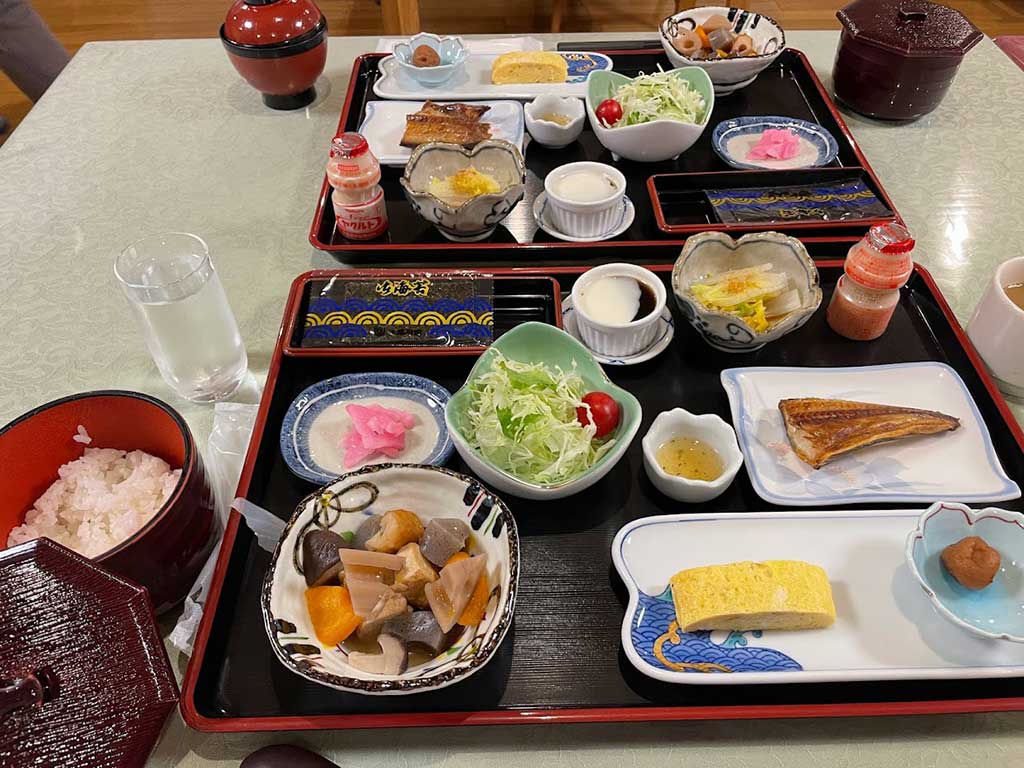
Then we headed off to hike from Cape Sukoton, the northernmost point of Rebun Island. Here we ventured out on the Cape Tour Course, a hike along the coastline from Cape Sukotom to Cape Sukai. The hike offers breathtaking views of the island’s cliffs and rolling hills. We had the trail and views to ourselves.
At our beach lunch stop, Tobachi collected shells for each of us, each with small holes in them. The holes are made by Tsumegagai snails that drill into the shells to eat the clam. The sandwiches and fruit we enjoyed were delicious, not quite as “interesting” as breakfast!
Seaweed of Rebun & Rishiri
Then we were off to Lake Kushu Course for a relaxing hike around this springtime and fall bird watching paradise.
The seaweed (‘Rishiri-konbu’) of Rebun and Rishiri is considered a delicacy. It is sustainably harvested from the ocean and laid out to dry in the sun for two days. We learned all about it when we stopped to help a few rugged hip island seaweed gatherers with their task.
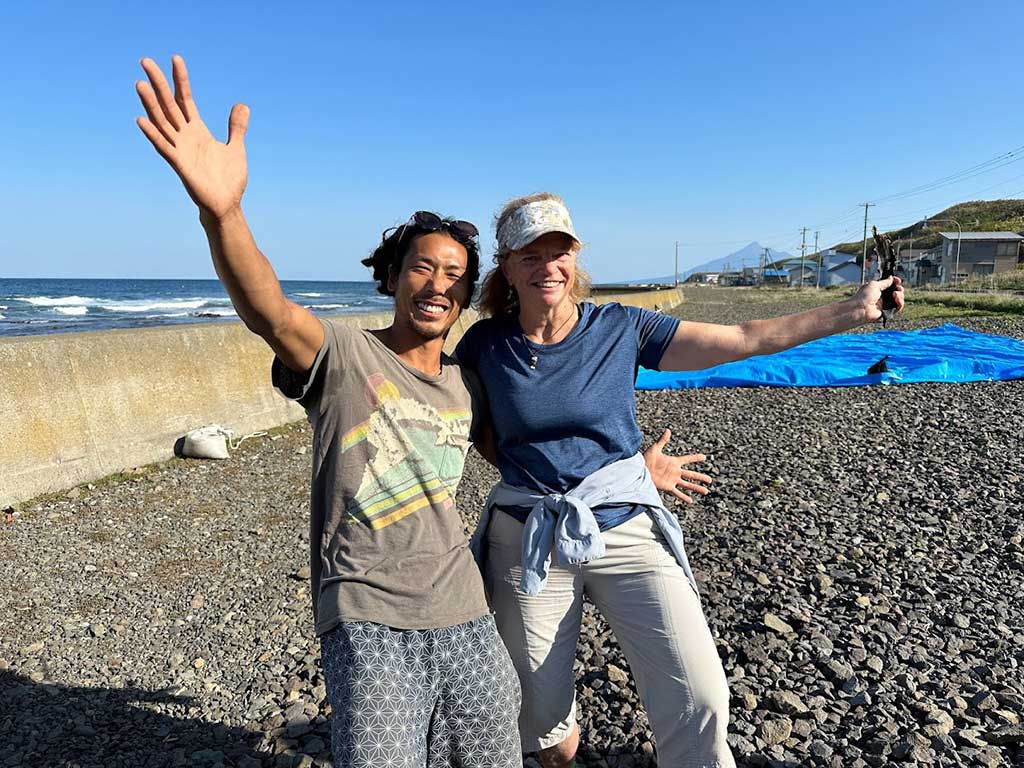
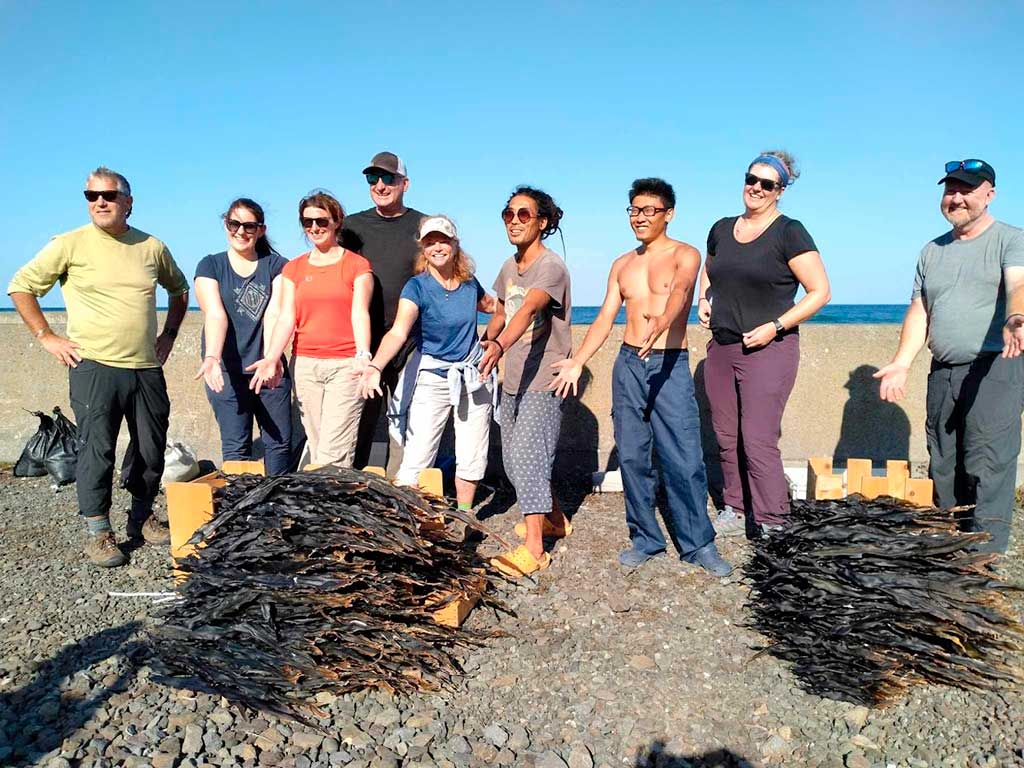
Our last stop of the day was the Momodai Nekodai Observatory located in the southwest of the island. Found here is the Momaiwa Rock. It was formed when magma pushed the earth’s surface upward and it cooled into a huge spherical rock with layers like an onion.
From here we spotted a few of the last blossoms of Edelweiss and had our first view of the towering volcano on neighboring Rishiri Island. This imposing 5,646-foot peak is one of Japan’s 100 Famous Mountains.
Next we enjoyed another day with a stunning hike to the southern tip of Rebun.
We saw a few more blooms, ate a late lunch, and took the forty-minute afternoon ferry to the totally different landscape of Rishiri Island.
Whether the weather was not fit or we were not, the next day we opted for a partial hike towards the summit of the volcano Rishiri-Fiji. Then, we turned up the side trail of Mt. Chokan, just below at 1200 meters, and toasted the view with our new friends and some fine Japanese whiskey.
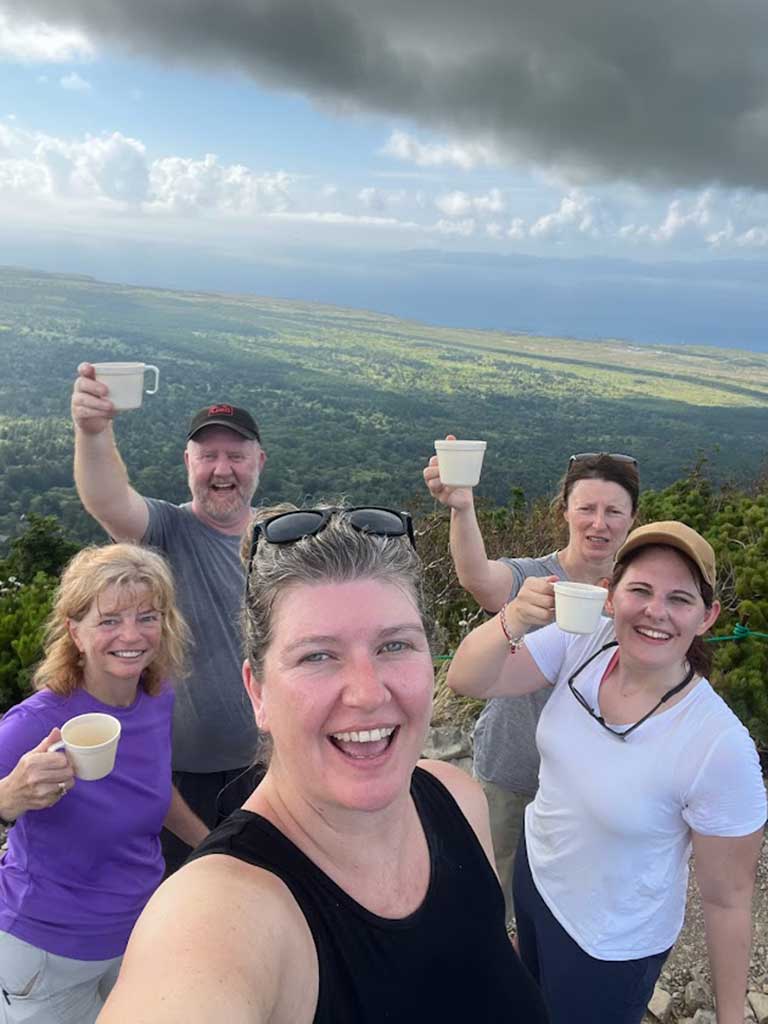
Dinner this night was at a very small traditional, local seafood (isakaya) bar and restaurant where we sat on the floor, grilled our own fish and scallops at the table, and tried several types of sake. The seas around the islands are teaming with seafood, from scallops to konbu kelp.
Hokkaido – An element of surprise
So went my first days in the lesser-known region of northern Hokkaido. I continued on to Sapporo for the ATTA summit and then a post-summit adventure to Daisatsuzen National Park. There I met a famous eighty-four-year-old mountaineer photographer and a sake rice farming snowboarder, hiked where the bears live, cycled around the mountains of Higashikawa, and learned about the history and lives of the indigenous Ainu people.
I was stunned and smitten by the beauty, the warm welcoming culture, and the wonderful hospitality of our hosts and guides from Adventure Hokkaido. This was a destination of which I knew very little. That’s why I believe it is necessary to head off the beaten path… To spread out to these lesser known, out of the ordinary regions.
The Adventure Travel Trade Association agrees.
“While traveler demand for iconic experiences and bucket list destinations is higher than ever, the adventure travel community sees the potential — and necessity — of offering lesser-known regions and an element of surprise [as they did for me] in Japan.”






1 Comments
Sherri
Your autumn experience showed a completely different side of Hokkaido than we saw in the winter. How fun!!